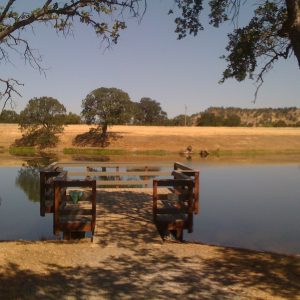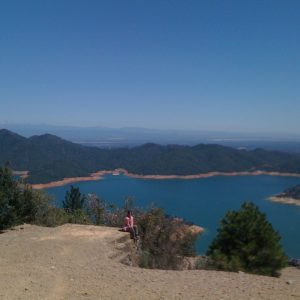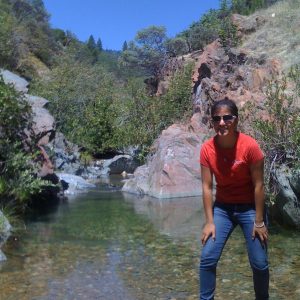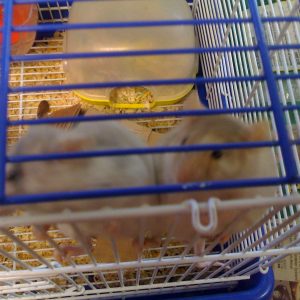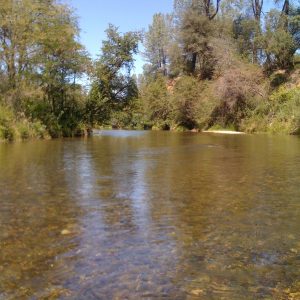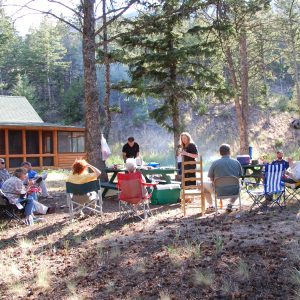Hello everyone!! This last week was incredibly busy. We were assigned to a new project where we have to go to random plots generated by the GIS and monitor those sites. We have to go to seven different pastures and monitor five to twenty plots (depending on the size of the pasture). We were given ten extra plots in case we could not make it to some of them or if the site had barren ground. It was suggested that we would split up to cover more ground and plots, but we were sort of against that idea. Each site has to be on a less than 35 degree slope and away from any wet areas. We were given the maps and everything looked very straight forward and easy…we were dead wrong. O_O

I thought this was an interesting picture.
Previously…On Lost….
We decided to go to the Nevada pastures (located in northern Nevada <_<) and quickly monitor them, because there were five plots in each small pasture. After we have established our final ES&R plot, we went off-roading to the random plot locations. Thank goodness for four wheel drive, because I was driving over very rocky terrain. We were following the Trimble/JUNO GIS device to our next location. There were no roads, so we would have to wing it. When driving, I had to watch out for the grassy areas, because there would be large rocks hiding within.
The directions to our first site led us up a mountain, near the Red Mountain area. This pasture was called Long Canyon/ Upper Crow Creek and was located on the other side of the fence. I was starting to get very scared, because the slope was getting very steep. In order to get to Long Canyon/ Upper Crow Creek Pasture, we had to get to this gate, which was at the top of the mountain. (I was wondering, who in their right mind would put a gate at such a high elevation at such a steep angle…) We got there and I had to turn my vehicle to go through the gate. When I got to the other side, the steepness of the topography made it seem like I was tipping down the hill. When Dan said, “Oh crap, the wheel is off the ground.” I was shocked and Randy quickly shifted his weight to keep the vehicle from tumbling down the mountain. We all thought this was a bad idea and quickly moved down hill, noting to never go to that plot. We learned that the plot might be located on less than thirty five degree slope, but it could be surrounded by steep drop offs or rocky cliffs. If the terrain was too dangerous, we would move onto the next plot noting that we could not make it to the present plot we were trying to get to.
We went through another way into the Long Canyon/ Upper Crow Creek Pasture. This pasture was on steep terrain, but it did have a road! We managed to get two plots that day. One of the plots was located near a granitic intrusion, which was fascinating! The local cows were curious and approached us with the utmost secrecy. They would eventually moo notifying us that they were there. (I think they just wanted our lunch…)
The JUNO did help us find the plots, but due to the satellite signal, navigation was tedious. We were lost most of the time, so we used my GARMIN GPS to help pinpoint the plots. Luckily, we were successful in finding some of the plots, but we would have to return to this pasture another day.

Steep mountain slope I had to drive up.
“Pole Patch Pasture? Ha! That is an easy one to monitor”- Said no one ever.
The next day we went to Pole Patch Pasture, which was located in the top part of the Trout Creek Mountains. The previous established plots we monitored were on a smooth flat topography. We thought this would be easy! 😉 …….it was not V_V… At least we did have a lot of fun finding the random plots. It was like the ultimate geocaching adventure! The mountain mahogany (Cercocarpus spp.) in the area made the terrain seem like Africa. Half of the plots were easy to get to. We saw a variety of wildlife including the chukars. Man, those birds were bountiful in our area. They were crawling all over the rocky ridges. Many of the chukars were juveniles and had a tough time keeping up with their parents. Unfortunately, they did not waddle to their heart’s content like the sage grouse did.

We were on a monitoring safari!
We even found the elusive Balsamorhiza sagittata in one of our random plots…Today was a good day.
The whole landscape was covered with basalt flows and rocks, making off roading a bumpy experience. You could even sing Ode to Joy in quarter notes, because each note was a bump from a rock. Some sites were located next to cliffs, and sometimes we would have to climb downwards from rock ridges to get to some of the plots. This trip gave us plenty of good off roading/ driving experience. Dan and I were joking that we could make a BLM off roading video.
The last few sites were located on steep terrain or near cliffs, so we would have to do a lot of walking. We loved the exercise and scenery, but we thought that the GIS algorithm for establishing these random plots was going crazy. Pole Patch had many moments of seriousness (especially driving down the ridges), but we survived and had an outgoing view on this pasture. We managed to survey all of the plots, including two extra ones!
Mr. Rattles Version 2.0
Our next pasture we had to go to was called the Mahogany Pasture. As usual, we would leave 4:45am in the morning to get to our random plots. We traveled about an hour to this pasture. When we arrived, we found out that the gate had a padlock on it… Who puts a padlock on public land!? o_O
We changed our plan. We were now heading towards the biggest pasture, the pasture with no name….. No joke! The pasture was called No Name Pasture. This pasture had a huge number of plots. There were valleys, mountains, the occasional happy cattle dog, and rocky terrain. This pasture had it all! Our first plot was located in a flat basin area near water. (GIS…I thought you calculated the water factor out of this…<_<) I mentioned to my fellow intern, Dan, that this was ideal rattlesnake territory. There were rocks all over with a nice source of water. We monitored our first random site and then we heard a yell from Randy, who was located on the top of the hill. We quickly gathered our things and started to head up the slope to see what was going on. Randy yelled that there was a rattlesnake by him. We cautiously ran up the hill towards Randy. He mentioned that he almost stepped on it when it started to rattle. This rattlesnake was bigger than the one I saw at the Miller Homestead Fire. It was coiled and rattled at us. The snake especially hated Randy. It was always looking towards him. (I thought they had poor eyesight…) We took a couple of pictures and left it alone. I named the rattlesnake Mr.Rattles Version 2.0, but the snake could’ve been female…I did not want to check.

Mr. Rattles Version 2.0 is not amused…
Later in the day, we went on rocky slopes to some of the random plots. We could not bring the vehicle, because of the steepness of the mountain. Dan and I were in dry rocky areas where Zigadenus paniculatus (foothill death camas) was present. I love all plants that I encountered on this internship…. except the foothill death camas. This plant would scare the bajeezus out of me. Their seed pods rattle like a rattlesnake rattle. Whenever I would step into one and I would hear it rattle, I would jump up in the air and run up the hill. When I would turn around I would see the death camas and I would be like, “ ZIPA2! What the heck!” (Yes, I sometimes yell at plants.) I was still cautious each time I would be around rattlesnake territory. Dan, Randy, and I would call rattlesnakes, snaddlerakes, to make light of the situation.

How I view the landscape in the No Name Pasture…
The Bad Idea
We were still monitoring in the No Name Pasture. There were many sites to monitor and we would have limited time to get to all of them within a two week period. We decided to split up to cover more ground. This idea was suggested to us by the person (not our mentor) who was in charge of the project. Dan and I went to a couple of sites located up this hill. Randy was with a vehicle, while we monitored as many sites as possible.
(Flashback)
The firefighters were down at our field station awaiting the results of the weather coming through our area. It was supposed to storm and produce lightning to cause fires. The same storm system caused a fire down in Nevada. They were on patrol and I was talking to them about the weather. The morning was overcast with the southern horizon covered with rain clouds.
(Flashforward to the Afternoon)
Both Dan and I climbed up this rocky ridge and monitored two sites. The JUNO was being jumpy, so it took us longer to get to our destination. We knew the general direction of where Randy was, but we did not know exactly where he was. The Southern Pueblo Mountains were covered with rain and we were at our last site. We did not see any lightning, but it was starting to rain and become very windy. We monitored the plot in two minutes flat and we quickly headed towards the direction of Randy. The rain was sparse, but the wind was very bad. Usually when it is windy, the dust from the surrounding area blows right at you. We were a dust magnet! We quickly ran down the mountain, while stopping occasionally for insect pictures. Dan would yell in the valley hoping that Randy would hear us. At one point we got a communication signal and was able to call Randy. We found his location before the rain got very bad. We quickly drove north and out of the rain storm. We learned that we would always stay together and not separate from our group. Safety first 😉

It is time….to monitor….
Before the rainstorm, we quickly used the two rulers to monitor a 3ftX3ft area.
To make light of the situation, I did a small pose at the site.
Sidenote: The rainstorm did not cause any fires.
Misadventures
BLM Legends
“Let us take a moment to recognize all of the BLM Legends.” said Dan as we were walking to our office space within the BLM building. Everyday when we were in office, we would take a moment to look at the wall of the Burns/Hines BLM Legends. These people dedicated their lives to the BLM and served their country proud. Unfortunately, Dan and I don’t know any of their backgrounds, so we would make up a story to go with their legendary status…similar to the Dos Equis commercials.
Burns/Hines Manager #3 1967-1973: Became a BLM Legend by establishing a whooping 35 trend sites in one day and established the resource boundaries of our mighty district.
Burns/ Hines Manager #8 1985-1989: Had ten years’ experience with working for the BLM within a five year period. Managed to protect the wild horses single handily, while establishing a document to meet both the needs of the cattle ranchers and horses. Achieved his BLM Legend Status by creating paved roads for the Steen Mountains.
President Obama: BLM Legend…He is our President, which automatically makes him a BLM Legend.
Deer
One of the most common animals we see in the field and in town were the deer. They were all over the place! Sometimes I would see up to six deer in my backyard. Right now as I am typing this I see four fawns, a doe, and a buck. When we were monitoring we would see them on the ridges staring at us before moving on. If they cannot see us they would make a large snorting sound to make us move, so they could detect us. Some bucks we see in the field were very big and we were usually questioned by the hunters in our area about the bucks on top of the Trout Creek Mountains. We would just say they are present.

So cute….man I really need to clean my windows…

